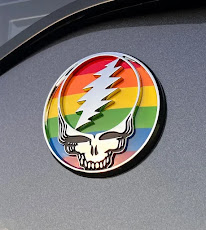I love movies and stories from the Golden Age of Hollywood. I love the glamor and glitz. I love the bigger-than-life personas. I love the behind-the-scenes dirt and gossip. There is just something so, appealing, so compelling and so reviling about the stars, the movies and the lore of the movie business from the 1930s until roughly the early 1960s.
I especially love the dark, seedy underside of Hollywood. That's where the real fun is. Scandals in Hollywood are nothing new. Lurid tales of double-crossing, abuse of power and false promises go back to the first time a strip of film passed though a flickering light and was projected on a screen. One of the best accounts of true Hollywood lore — in my worthless opinion — is Nathanael West's 1939 novel The Day of the Locust. A flop in its initial release, The Day of the Locust gained universal praise a decade after its first publication. Since the 1950s, the novel has appeared on numerous "required reading" lists and "best novels of the 20th century" compilations. Sadly, Nathanael West was killed in a car wreck just eighteen months after its publication.
The Day of the Locust is a dirty story of dirty people in a dirty industry. Thirty-six years after publication of the novel, Academy Award-winning director John Schlesinger brought the story to the big screen.
The Day of the Locust is a dirty story of dirty people in a dirty industry. Thirty-six years after publication of the novel, Academy Award-winning director John Schlesinger brought the story to the big screen.
Although I loved the book so much, I never saw the movie until yesterday.... and what a movie it was.
The film version of The Day of the Locust stars young and versatile William Atherton in just his second starring role. He plays the main protagonist, aspiring art director Tod Hackett. His role is ably supported by a cast familiar to avid viewers of 70s movies and television. The characters from the book were thoughtfully cast, not just plopping the "flavor of the week" into a role, as is so often done in today's film offerings. The criminally underrated Karen Black plays wanna-be starlet Faye Greener. Her father, washed-up third-rate vaudeville clown Harry Greener is chillingly portrayed by Burgess Meredith. And, then there's the always capable Donald Sutherland as bashful, naïve Homer Simpson (no reference to the cartoon character — just pure coincidence), who gets top billing, despite not appearing until nearly forty minutes into the film. Also along for the ride are Jackie Earle Haley as an obnoxious child star, Gloria LeRoy as his overbearing mother, Bo Hopkins as a scummy Western star, Billy Barty, as Abe Kusich, Tod's cantankerous neighbor (and one of the film's most unsettling performances), John Hillerman and Richard Dysart as shifty movie studio executives, Paul Jabara as a nightclub drag queen and a surprising Natalie Schafer as (of all things) a whorehouse madam. I also spotted Nita Talbot, Robert Pine, Dennis Dugan and Jerry Fogel in small roles. The whole ensemble plays each individual part to its harrowing and pitiful hilt. The sets are vintage and the scenes are slightly tinted in a sepia hue, giving an air of authenticity of the era.
But, be warned. This is no love letter to Hollywood. On the contrary, glamor and glory takes a back seat. This is a sick, sleazy, sordid tale of lowlifes, broken dreams, lofty delusions, shallow personalities, sexual escapades, entitlement, disregard for humankind, arrogance and contempt... and a little bloody cock fighting thrown in for good measure. The final scene — which seems to go on and on long enough to make sure every gut is properly wrenched — will haunt you for days. It is visually unforgettable and perfectly illustrates the climactic nightmarish scenario as described in the book. It is brutal, disturbing and, at the same time, poignant and tragic. Film reviewer Lee Gambin called The Day of the Locust a "non-horror film that is secretly a horror film."
I met William Atherton at a horror-themed celebrity autograph show several years ago. Known mostly for his later career roles in Ghostbusters, Die Hard and countless other movies and television shows, I caught William off-guard when I asked if he had any stills from The Day of the Locust. He laughed and leaned in close to me so as not to let the other attendees — some dressed as Freddy Krueger and Jason Voorhees — hear what he was about to say. He whispered, "Nobody here has seen The Day of the Locust." as he gestured toward the costumed occupants of the room. Then he reached under his table to retrieve a briefcase from which he produced a single promo shot of him dancing with a blond-wigged Karen Black. He graciously inscribed the photo and even posed for a picture with me. I shook his hand and thanked him. He smiled and said, "That was a great movie and a great experience filming it."
It was a great experience watching it, too. Take that as a warning.






























